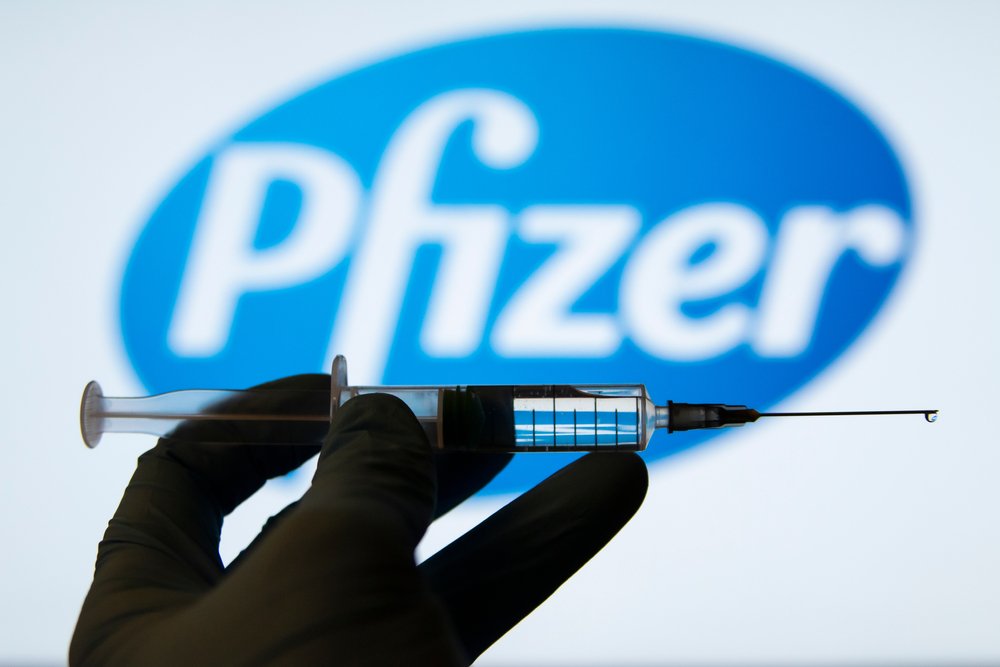With news about the COVID-19 pandemic front and center every day, it can be hard to imagine there’s anything we don’t know about infection rates, recommended treatments, and vaccine development. But in a recent presentation at the annual meeting of the American College of Medical Genetics and Genomics, Pfizer Chief Scientific Officer Mikael Dolsten shared new details in a behind-the-scenes look at how the pharma teamed up with the German biotech company BioNTech to develop the world’s first FDA-authorized mRNA vaccine. Here are some things you may not have known about those efforts.
1. It all started with the flu
The collaboration was never intended to conquer COVID-19. Pfizer and BioNTech began working together in 2018 to develop mRNA-based vaccines for influenza. At the time, other mRNA vaccine candidates were under development, but no mRNA-based treatment had ever been approved for use outside of clinical trials. When the SARS-CoV-2 virus emerged as a significant threat in early 2020, Pfizer’s leadership team set a goal of delivering a vaccine within the year. That kind of time frame had never been met in vaccine development before. “We had earlier experience in mobilizing our resources for epidemics,” Dolsten said, pointing to the original SARS outbreak as an example. To move quickly, they drew upon existing assets — including the collaboration with BioNTech. As they watched the death toll rise, they knew that “every day, every hour would matter,” he added.

2. The authorized vaccine wasn’t the only one tested
While Pfizer scientists believed that mRNA technology was the best bet for an effective vaccine that could be developed with unprecedented speed, they also needed to hedge their bets. Together with the BioNTech team, they created and tested four different vaccine candidates targeting different pieces of the virus and using various RNA formats. One candidate was designed as a single injection while the others needed two doses. The candidate known as BNT162b2, targeting the viral spike protein, appeared the most promising and became the companies’ prime candidate in clinical trials that initially enrolled a few hundred participants, then a few thousand, and finally the tens of thousands of people tested in 153 clinical trial sites globally. So when someone inevitably asks which vaccine you received, instead of answering “Pfizer,” you can impress them with your insider knowledge and say “BNT162b2.”
3. Even the scientists were stunned by the clinical trial results
As Dolsten and others watched results from the clinical trial testing for vaccine efficacy, they almost couldn’t believe what they were seeing. Participants in the vaccine arm and the placebo arm of the trial had similar infection rates in the first week. But after 10 or 11 days — as the mRNA vaccine protection took hold — their paths diverged significantly. The resulting vaccine efficacy of 95% was “a really dramatic number,” Dolsten said. Some of the most exciting metrics came from people expected to be most vulnerable to the virus: participants who identified as Black or Hispanic had vaccine efficacy of 100% and 94.4%, respectively.
4. Israel was a kind of mega clinical trial
After Pfizer’s vaccine performed so well in a large clinical trial — the data that allowed the vaccine to be authorized for public use — Dolsten and his colleagues wanted to generate real-world data from a much larger sample size. They spoke to leaders in several countries, and selected Israel because it offered some of the benefits of a controlled clinical trial. It had a small population of 9.3 million, high impact of COVID-19, controlled borders, and excellent electronic medical records. Scientists were able to get weekly and sometimes even daily updates on how the vaccine was performing there. Notably, the highly transmissible B.1.1.7 variant first reported in the U.K. was the dominant strain in Israel at the time. For all recipients age 15 or older, vaccine efficacy for preventing COVID-19 was better than 96% two weeks after the second dose.

5. More than half of doses given have been the Pfizer/BioNTech vaccine
As of March 15, some 359 million vaccine doses had been given around the world, with Pfizer’s vaccine representing 58% of those, Dolsten said. In the U.S. at the same time, 107 million doses had been administered and about half of those came from Pfizer. This was possible because Pfizer scaled up manufacturing capacity long before the vaccine was authorized for use. Had the clinical trials gone badly, the company could have wound up with tens of millions of doses that would have had to be scrapped.
6. They’re still working on it
Pfizer’s team does not consider the COVID-19 vaccine a finished product. Scientists are working on several fronts to ramp up production, improve storage conditions, and determine whether a booster shot could offer longer-lasting protection against existing and emerging variants of the virus. Separately, they’re also pursuing efforts to develop protease inhibitor therapies designed to work in patients infected with any type of coronavirus, not just SARS-CoV-2. Those treatments are now in clinical trials.
Dolsten concluded with his perspective on how well the scientific community rose to the challenge presented by COVID-19. “2020 has been a very difficult year,” he said, “but it’s also been a breakthrough year for science and medicine.”

















